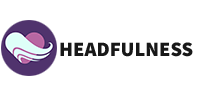The Burns Anxiety Inventory
The Burns Anxiety Inventory is a self-report questionnaire designed to assess the symptoms and severity of anxiety.
The questionnaire consists of 33 questions that cover various aspects of anxiety, such as physical symptoms and worrying.
It was developed by psychologist Dr. David D. Burns and is widely used in clinical, research, and educational settings.
Free Online Assessment
You can calculate your Burns Anxiety Inventory score automatically below.
Read each question carefully and rate the frequency of each symptom.
Once you have completed all the questions, you can calculate your score and interpret the results.
In the past week, how often have you experienced the following:
Interpreting the results
The results of the Burns Anxiety Inventory are scored on a scale of 0 to 99, with higher scores indicating higher levels of anxiety symptoms.
If the assessment is being used for clinical purposes, a mental health professional will take into account the individual's symptoms, history, and overall mental health to determine the best course of action, which may include therapy, medication, or other forms of treatment.
If the assessment is being used for research or educational purposes, the results will typically be compared to a standard score or to scores from a similar population.
It's important to keep in mind that the Burns Anxiety Inventory is not a diagnostic tool, but rather a tool for measuring anxiety symptoms.
Development and History of the Burns Anxiety Inventory
The Burns Anxiety Inventory was developed by Dr. David D. Burns in 1999 as a tool to assess anxiety levels.
The questionnaire was based on Dr. Burns' previous research and clinical experience in treating individuals with anxiety disorders.
The Burns Anxiety Inventory continues to be a valuable tool for individuals seeking to understand and address their anxiety symptoms.
Advantages of Using Burns Anxiety Inventory
The Burns Anxiety Inventory is a popular tool for assessing anxiety levels due to its several advantages
Quick and easy assessment
It is a quick and easy assessment that can be completed in as little as a few minutes. This makes it a convenient option for individuals who are seeking a fast and accurate measurement of their anxiety symptoms
Valid and reliable measurement tool
The questionnaire has been shown to be a valid and reliable measurement tool, meaning that it provides accurate and consistent results. This is important for ensuring that individuals receive the most appropriate help for their symptoms.
Can be used in various settings
The Burns Anxiety Inventory can be used in various settings, including clinical, research, and educational settings. This versatility makes it a valuable tool for a wide range of individuals and professionals seeking to understand and address anxiety symptoms.
Limitations of Burns Anxiety Inventory
While the Burns Anxiety Inventory is a valuable tool for assessing anxiety levels, it is important to be aware of its limitations.
May not capture all aspects of anxiety
The questionnaire may not capture all aspects of anxiety, as it focuses on a limited set of symptoms and behaviors. This means that individuals with more complex or unique anxiety symptoms may not receive an accurate assessment using this tool.
May not be suitable for certain populations
The questionnaire may not be suitable for certain populations, such as individuals with cognitive impairments or young children, who may have difficulty understanding or completing the questionnaire.
Burns Anxiety Inventory compared to other anxiety assessments
The Burns Anxiety Inventory is just one tool for assessing severity of anxiety symptoms.
Others include the Beck Anxiety Inventory and State Trait Anxiety Inventory. The Burns Anxiety Inventory is a longer questionnaire in comparison, but has similar accuracy.
A clinician may use a combination of tools to accurately assess anxiety severity.
Conclusion
The Burns Anxiety Inventory is a widely used tool for assessing anxiety levels.
Burns Anxiety Inventory can provide valuable information for individuals seeking to understand and address their anxiety symptoms, but it should be used in conjunction with other assessments and professional guidance.
You can come back to this page periodically to calculate your Burns Anxiety Inventory score to see how your anxiety is progressing.
Therapists and psychologists are welcome to use this page with their clients.
References
https://www.counseling.org/resources/library/vistas/vistas06/vistas06.50.pdf

